Related Research Articles
Helioseismology, a term coined by Douglas Gough, is the study of the structure and dynamics of the Sun through its oscillations. These are principally caused by sound waves that are continuously driven and damped by convection near the Sun's surface. It is similar to geoseismology, or asteroseismology, which are respectively the studies of the Earth or stars through their oscillations. While the Sun's oscillations were first detected in the early 1960s, it was only in the mid-1970s that it was realized that the oscillations propagated throughout the Sun and could allow scientists to study the Sun's deep interior. The modern field is separated into global helioseismology, which studies the Sun's resonant modes directly, and local helioseismology, which studies the propagation of the component waves near the Sun's surface.
Eric Ronald Priest is Emeritus Professor at St Andrews University, where he previously held the Gregory Chair of Mathematics and a Bishop Wardlaw Professorship.

Professor Ian Philip Grant, DPhil; FRS; CMath; FIMA, FRAS, FInstP is a British mathematical physicist. He is Emeritus Professor of Mathematical Physics at the University of Oxford and was elected a fellow of the Royal Society in 1992. He is a pioneer in the field of computational physics and is internationally recognised as the principal author of GRASP, the General Relativistic Atomic Structure Program.
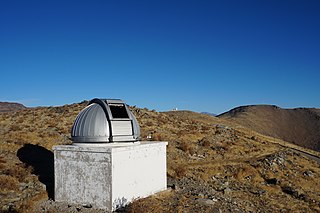
The Birmingham Solar Oscillations Network (BiSON) consists of a network of six remote solar observatories monitoring low-degree solar oscillation modes. It is operated by the High Resolution Optical Spectroscopy group of the School of Physics and Astronomy at the University of Birmingham, UK, in collaboration with Sheffield Hallam University, UK. They are funded by the Science and Technology Facilities Council (STFC).

The Department of Physics and Astronomy at the University of Manchester is one of the largest and most active physics departments in the UK, taking around 250 new undergraduates and 50 postgraduates each year, and employing more than 80 members of academic staff and over 100 research fellows and associates. The department is based on two sites: the Schuster Laboratory on Brunswick Street and the Jodrell Bank Centre for Astrophysics in Cheshire, international headquarters of the Square Kilometre Array (SKA).
Solar-like oscillations are oscillations in distant stars that are excited in the same way as those in the Sun, namely by turbulent convection in its outer layers. Stars that show solar-like oscillations are called solar-like oscillators. The oscillations are standing pressure and mixed pressure-gravity modes that are excited over a range in frequency, with the amplitudes roughly following a bell-shaped distribution. Unlike opacity-driven oscillators, all the modes in the frequency range are excited, making the oscillations relatively easy to identify. The surface convection also damps the modes, and each is well-approximated in frequency space by a Lorentzian curve, the width of which corresponds to the lifetime of the mode: the faster it decays, the broader is the Lorentzian. All stars with surface convection zones are expected to show solar-like oscillations, including cool main-sequence stars, subgiants and red giants. Because of the small amplitudes of the oscillations, their study has advanced tremendously thanks to space-based missions.
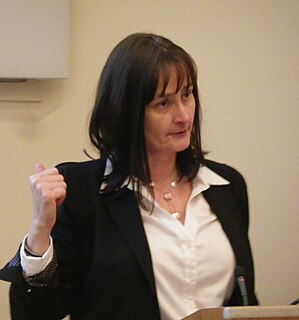
Michele Karen Dougherty is a Professor of Space Physics at Imperial College London. She is leading unmanned exploratory missions to Saturn and Jupiter and is Principal Investigator for J-MAG – a magnetometer for the European Space Agency's Jupiter Icy Moons Explorer, due for launch in August 2022.
Douglas Owen Gough FRS is a British astronomer, Professor Emeritus of Theoretical Astrophysics in the University of Cambridge, and Leverhulme Emeritus Fellow.

David George Charlton is Professor of Particle Physics in the School of Physics and Astronomy at the University of Birmingham, UK. From 2013 to 2017, he served as Spokesperson of the ATLAS experiment at the Large Hadron Collider at CERN. Prior to becoming Spokesperson, he was Deputy Spokesperson for four years, and before that Physics Coordinator of ATLAS in the run-up to the start of collision data-taking.
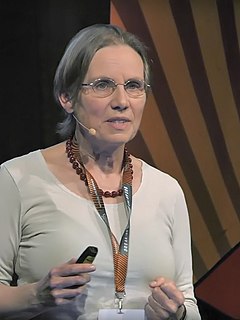
Julia Mary Yeomans is a British theoretical physicist active in the fields of soft condensed matter and biological physics. She has served as Professor of Physics at the University of Oxford since 2002.

Jenny Nelson is Professor of Physics in the Blackett Laboratory and Head of the Climate change mitigation team at the Grantham Institute - Climate Change and Environment at Imperial College London.
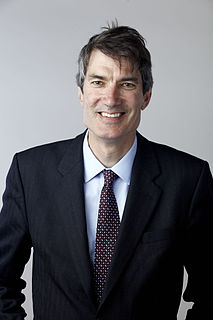
Sir Steven Charles Cowley is a British theoretical physicist and international authority on nuclear fusion and astrophysical plasmas. He has served as director of the United States Department of Energy (DOE) Princeton Plasma Physics Laboratory (PPPL) since 1 July 2018. Previously he served as president of Corpus Christi College, Oxford, since October 2016. and head of the EURATOM / CCFE Fusion Association and chief executive officer of the United Kingdom Atomic Energy Authority (UKAEA).

Henry James Snaith is a professor in physics in the Clarendon Laboratory at the University of Oxford. Research from his group has led to the creation of a new research field, based on halide perovskites for use as solar absorbers. Many individuals who were PhD students and postdoctoral researchers in Snaith's group have now established research groups, independent research portfolios and commercial enterprises.

Andrew Peter Mackenzie is a director of Physics of Quantum Materials at the Max Planck Institute for Chemical Physics of Solids in Dresden, Germany and Professor of Condensed Matter Physics at the University of St Andrews, Scotland. He became a co-editor of the Annual Review of Condensed Matter Physics as of 2020.
Kepler-432 is a binary star system with at least two planets in orbit around the primary companion, located about 2,830 light-years away from Earth.
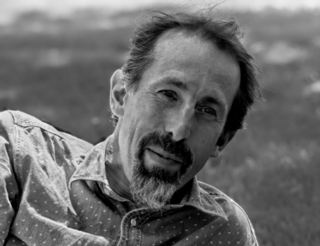
Jeremy John Baumberg, is Professor of Nanoscience in the Cavendish Laboratory at the University of Cambridge, a Fellow of Jesus College, Cambridge and Director of the NanoPhotonics Centre.
Andrew Dawson Taylor is director of the Science and Technology Facilities Council National Laboratories – Rutherford Appleton Laboratory, Daresbury Laboratory, and the UK Astronomy Technology Centre in Edinburgh.
Mount Kent Observatory near Toowoomba, in the Darling Downs region of Queensland, Australia, is an observatory owned and operated by the University of Southern Queensland (USQ). It is the only professional astronomical research observatory in the state of Queensland. Mount Kent hosts the four MINERVA-Australis exoplanet-finding telescopes, three SONG telescopes for asteroseismology and stellar astrophysics, two 'Shared Skies' telescopes, and a USQ-Louisville telescope.
HD 176693, also known as Kepler-408, is a F-type main-sequence star about 290 light-years away. The star is older than the Sun, at 7.15 billion years. It is slightly and uniformly depleted in heavy elements compared to the Sun, having about 75% of the solar abundance of iron and other heavy elements.
References
- 1 2 3 Anon (2015). "Professor Yvonne Elsworth FRS". London: Royal Society. Archived from the original on 6 March 2016. One or more of the preceding sentences incorporates text from the royalsociety.org website where:
"All text published under the heading 'Biography' on Fellow profile pages is available under Creative Commons Attribution 4.0 International License." -- "Royal Society Terms, conditions and policies". Archived from the original on 25 September 2015. Retrieved 9 March 2016.
{{cite web}}: CS1 maint: unfit URL (link) - 1 2 3 Anon (2015). "Professor Yvonne Elsworth BSc, PhD, FRAS, FInstP Professor of Helioseismology Poynting Professor of Physics". University of Birmingham. Archived from the original on 4 March 2016.
- ↑ "Archived copy". astro.phys.au.dk. Archived from the original on 11 June 2007. Retrieved 12 January 2022.
{{cite web}}: CS1 maint: archived copy as title (link) - 1 2 Elsworth, Yvonne P. (1976). A field-compensated multiplex spectrometer for the visible region (PhD thesis). University of Manchester. ProQuest 301333536.
- ↑ Elsworth, Y; James, J F; Sternberg, R S (1974). "A field compensated interference spectrometer for the visible region: the optical design". Journal of Physics E: Scientific Instruments. 7 (10): 813–816. Bibcode:1974JPhE....7..813E. doi:10.1088/0022-3735/7/10/011.
- ↑ Hopkinson, G. R.; Elsworth, Yvonne; James, J. F. (1974). "Dust in the head of Comet Kohoutek". Nature. 249 (5454): 233–234. Bibcode:1974Natur.249..233H. doi:10.1038/249233a0. S2CID 4156717.
- ↑ Hopkinson, G. R.; Elsworth, Yvonne; James, J. F. (1974). "Photometry of the zodiacal light in the near infrared". Nature. 251 (5477): 694. Bibcode:1974Natur.251Q.694H. doi:10.1038/251694a0. S2CID 4198740.
- ↑ Elsworth, Y; James, J F (1973). "An optical screw with a pitch of one wavelength". Journal of Physics E: Scientific Instruments. 6 (11): 1134–1136. Bibcode:1973JPhE....6.1134E. doi:10.1088/0022-3735/6/11/027.
- ↑ Yvonne Elsworth's publications indexed by the Scopus bibliographic database. (subscription required)
- ↑ Chaplin, W. J.; Kjeldsen, H.; Christensen-Dalsgaard, J.; Basu, S.; Miglio, A.; Appourchaux, T.; Bedding, T. R.; Elsworth, Y.; Garcia, R. A.; Gilliland, R. L.; Girardi, L.; Houdek, G.; Karoff, C.; Kawaler, S. D.; Metcalfe, T. S.; Molenda-Zakowicz, J.; Monteiro, M. J. P. F. G.; Thompson, M. J.; Verner, G. A.; Ballot, J.; Bonanno, A.; Brandao, I. M.; Broomhall, A.- M.; Bruntt, H.; Campante, T. L.; Corsaro, E.; Creevey, O. L.; Dogan, G.; Esch, L.; Gai, N.; Gaulme, P.; Hale, S. J.; Handberg, R.; Hekker, S.; Huber, D.; Jimenez, A.; Mathur, S.; Mazumdar, A.; Mosser, B.; New, R.; Pinsonneault, M. H.; Pricopi, D.; Quirion, P.- O.; Regulo, C.; Salabert, D.; Serenelli, A. M.; Aguirre, V. S.; Sousa, S. G.; Stello, D.; Stevens, I. R.; Suran, M. D.; Uytterhoeven, K.; White, T. R.; Borucki, W. J.; Brown, T. M.; Jenkins, J. M.; Kinemuchi, K.; Van Cleve, J.; Klaus, T. C. (2011). "Ensemble Asteroseismology of Solar-Type Stars with the NASA Kepler Mission". Science. 332 (6026): 213–216. arXiv: 1109.4723 . Bibcode:2011Sci...332..213C. doi:10.1126/science.1201827. PMID 21474754. S2CID 33911883.
- ↑ Bedding, Timothy R.; Mosser, Benoit; Huber, Daniel; Montalbán, Josefina; Beck, Paul; Christensen-Dalsgaard, Jørgen; Elsworth, Yvonne P.; García, Rafael A.; Miglio, Andrea; Stello, Dennis; White, Timothy R.; De Ridder, Joris; Hekker, Saskia; Aerts, Conny; Barban, Caroline; Belkacem, Kevin; Broomhall, Anne-Marie; Brown, Timothy M.; Buzasi, Derek L.; Carrier, Fabien; Chaplin, William J.; Di Mauro, Maria Pia; Dupret, Marc-Antoine; Frandsen, Søren; Gilliland, Ronald L.; Goupil, Marie-Jo; Jenkins, Jon M.; Kallinger, Thomas; Kawaler, Steven; Kjeldsen, Hans; Mathur, Savita; Noels, Arlette; Aguirre, Victor Silva; Ventura, Paolo (2011). "Gravity modes as a way to distinguish between hydrogen- and helium-burning red giant stars". Nature. 471 (7340): 608–611. arXiv: 1103.5805 . Bibcode:2011Natur.471..608B. doi:10.1038/nature09935. PMID 21455175. S2CID 4338871.
- ↑ Anon (2015). "UK government grants awarded to Yvonne Elsworth". Swindon: Research Councils UK. Archived from the original on 15 March 2016.
- ↑ Anon (2011). "2011 Payne-Gaposchkin Medal and Prize". iop.org. Retrieved 18 July 2014.
- ↑ "Professor Yvonne Elsworth: 2020 Gold Medal in Geophysics" (PDF). RAS. Retrieved 25 August 2020.
- ↑ Anon (2015). "Yvonne Elsworth (FRAS) elected a Fellow of the Royal Society (FRS)". ras.org.uk.